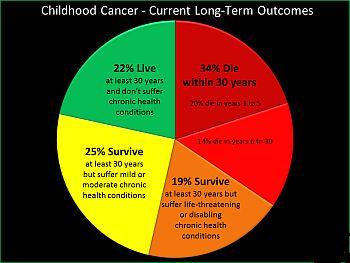(70) General Cancer
Animated Introduction to Cancer Biology

PATTERNING YOUR LIFE AS A SURVIVOR
Survival is all about living, how you live day to day despite cancer. I introduced the term “pattern for living” to describe each individual’s daily habits and thought patterns. Once cancer strikes, one’s pattern for living is absolutely altered by virtue of having to deal with the psychological and physical impact of the diagnosis. Yet cancer brings to the fore a powerful life force that makes one want to live more than ever. For some, maintaining as much normality as possible is the optimal way to savor life. Others, however, may feel sufficiently shaken by the diagnosis to want to make changes in their lives.
But will these changes be only temporary? What about after the initial period of shock and later acceptance of the diagnosis? What about after treatment ends, or if treatments continue off and on for years? Can the same patterns for living that held sway before cancer continue afterward?
These are the critical questions that each survivor will have to ask him or herself. Certainly, cancer causes fear for one’s health and life, for one’s very being. But for most people, life will go on after cancer is diagnosed, and so I suggest that each survivor ask him or herself, “Do I need to make any changes to my life? Can I use cancer as a turning point?” Cancer can provide the pause you need to look at how you take care of your body, deal with the stresses of life, and cope with emotional challenges that may have been simmering for years. Did you worry excessively about your life before cancer? Are there personal relationships that need attention and repair? Does your job fulfill you to the extent it should?
When you hear people say things like “Cancer made me a better person” or “Cancer was the best thing that ever happened to me,” instead of thinking that these people are half-baked, realize that what they mean is that they used the challenge of cancer to jar their life into a better place. You can, too. Use the positive forces around you along with your own inner strength to change a dysfunctional pattern of living, to make good choices for your life. You will feel better for it and have more peace of mind to cope with cancer as a result. As a cancer survivor, you will face many challenges. Two of the most important types are physical and psychological (emotional).
PHYSICAL CHALLENGES
The physical challenges facing survivors fall into two main categories:
(1) recovery from the side effects of treatment; and (2) monitoring the body for a cancer recurrence or new cancer.
Recovery from treatment. The first aspect of recovery from the physical side effects of cancer treatment involves improving your general health. It is important to recognize that you may need to change your lifestyle. In the book After Cancer Treatment: Heal Better, Faster, Stronger, Dr. Julie Silver, a specialist in rehabilitation and physical medicine at Harvard Medical School and a breast cancer survivor, writes that the three most important physical aspects of a healing lifestyle are:
1. Exercising regularly in a manner that builds strength and endurance
2. Eating a healthy diet
3. Obtaining proper rest during the day (by pacing yourself) and at night (by sleeping well)
Silver advocates making exercise a regular part of your life in order to derive its many benefits: less fatigue, reduction in pain, more strength, improved self-image, enhanced immune function, and decreased risk of developing cancer, among others. Ask your oncologist about resources in your community (such as physical therapy programs and nutrition counseling), and so that you can achieve the three essential physical aspects of a healing lifestyle.
The second aspect of physical recovery involves coping with specific problems wrought by cancer treatment. Surgery may have resulted in new physical limitations that may benefit from a consultation with a physiatrist (doctor specializing in rehabilitation medicine) and a program of physical therapy. Cancer-fighting medications and radiation therapy may have long-term effects on different body systems, including the health of the heart, bones, brain (cognitive impairment), nerves, and reproductive organs (sexual dysfunction and infertility). You will be informed of these potential side effects both before and especially after treatment, when any preventative measures and a schedule for monitoring these systems (such as a bone density test to assess bone strength) are laid out in your post-treatment care plan. Your primary care physicians and other specialists should also be involved in the post-treatment recovery plan. Several resources listed in appendix 2 discuss in detail the possible long-term side effects of cancer treatment.
Monitoring for recurrences or new cancers. The last thing you want to hear out of the mouth of the oncologist after finishing cancer treatment is, “Well, now it’s time for that screening colonoscopy!” Many an oncologist has received a look in response that basically says, “Go jump
in the lake!”
Monitoring for a cancer recurrence and for new cancers that can affect all people is an important component of survivorship. Monitoring (also called surveillance) serves two purposes: (1) to try to detect any developing cancer at its earliest stage; and (2) to help alleviate the concern over recurrences that all survivors experience. Your survivorship care plan will include both routine cancer screening tests, such as colonoscopy, mammography, and PSA measurements, as well as specialized tests (such as CT scans and MRIs) to detect a recurrence of the cancer just treated. The guidelines for cancer monitoring often change, so this aspect of your care plan may need to be updated from time to time.



































